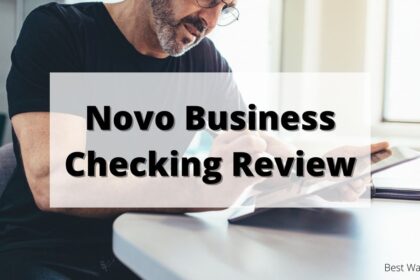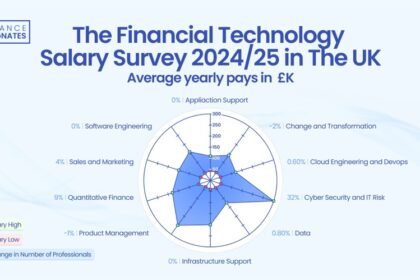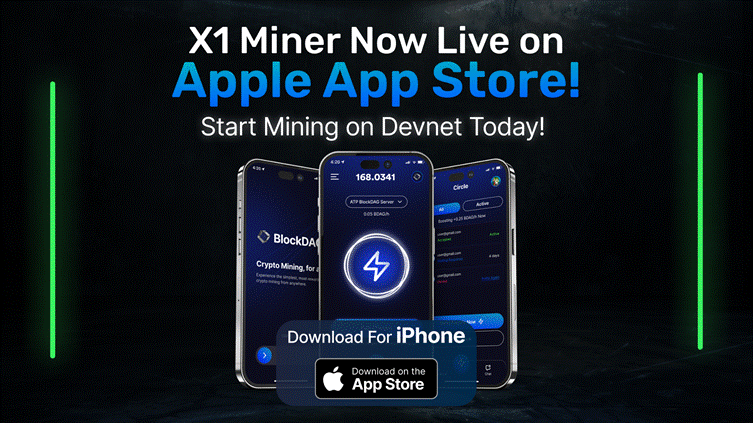In the fast-paced world of e-commerce, standing out from the competition is key to success. One powerful tool that can captivate and convert potential customers is video marketing. In this blog post, we will explore the impact of video marketing on e-commerce sales and how you can use it to boost your bottom line. Get ready to learn how to create compelling videos that drive engagement, increase conversions, and skyrocket your online sales!
Introduction to the power of video marketing for e-commerce sales
In today’s digital age, e-commerce has become a fundamental part of the retail industry. With the rise of online shopping, businesses are constantly looking for ways to stand out and attract customers in a highly competitive market. One effective strategy that has emerged is video marketing.
Videos have quickly become one of the most powerful tools for businesses to captivate and convert audiences. In fact, studies have shown that videos can increase website traffic, engagement rates, and ultimately drive more sales for e-commerce businesses.
The Power of Visuals
Humans are visual beings – we process images much faster than text. This is why videos are an ideal medium for capturing people’s attention and delivering messages effectively. According to research, 90% of shoppers say that they find videos helpful in making purchasing decisions.
Videos not only showcase products in a more engaging way but also create an emotional connection with potential customers. By demonstrating how products work, their features, and benefits through visuals rather than just text or images, businesses can better convey their value proposition.
Driving Traffic to Websites
Another significant impact of video marketing on e-commerce sales is its ability to drive traffic to websites. Websites with video content are more likely to appear on the first page of search engine rankings than those without any videos.
Moreover, videos can also be shared on various social media platforms where they have higher chances of going viral due to their shareability factors – increasing brand visibility and reach organically. This not only generates new leads but also directs interested buyers directly towards product pages on an e-commerce website.
Engaging Audiences at Every Stage
Different stages of the customer journey require different types of content – from awareness-building visual ads at the top-of-the-funnel stage to detailed product demonstrations later on in the customer decision-making process.
Videos offer versatility and flexibility in terms of format and length that makes them perfect for all stages of the customer journey. They can be used for product launches, customer testimonials, tutorials, or even behind-the-scenes videos to make customers feel more connected to the brand.
The rise of video in digital marketing and its impact on consumer behavior
One major reason for the rise of video in digital marketing is its ability to engage viewers on an emotional level. Unlike other forms of content such as text or images, videos have the power to evoke strong emotions through visuals, music, and storytelling. This emotional connection with viewers leads to higher levels of engagement and retention, making it more likely for them to remember and act upon the brand’s message. Studies have shown that emotionally charged ads are twice as likely to be shared compared to factual or promotional content.
Moreover, video has also revolutionized how consumers browse and shop online. With shorter attention spans and overwhelming amounts of information available at their fingertips, consumers now prefer quick and visually appealing ways to consume information about products or services. A well-crafted product video can quickly showcase its features, benefits, usage instructions in just a few seconds – saving time for busy shoppers while effectively conveying the brand’s message.
Influencers have also played a significant role in driving the popularity of videos in digital marketing. The rise of influencer marketing has resulted in authentic collaborations between brands and influencers who create engaging video content that resonates with their audience. Social media algorithms are also favoring videos over other forms of content when showing up on users’ feeds – further boosting their reach.
The impact of video on consumer behavior is undeniable. Consumers today demand authenticity from brands before making any purchasing decisions – they want to see real people using real products rather than staged advertisements featuring unattainable standards. Video allows brands to do just that by creating relatable content that builds trust with their potential buyers.
Furthermore, videos also facilitate better decision-making for consumers. Seeing a product in action or hearing a personal recommendation from an influencer can dispel any doubts or hesitation that buyers may have, leading to more conversions and sales.
Benefits of using videos for e-commerce sales: increased engagement, conversion rates, and brand loyalty
Videos have become an essential tool for businesses looking to boost their e-commerce sales. With the rise of social media and online shopping, incorporating video content into a company’s marketing strategy has proven to be highly beneficial. In this section, we will discuss the key advantages of using videos for e-commerce sales: increased engagement, conversion rates, and brand loyalty.
Increased Engagement:
One major advantage of using videos for e-commerce sales is that they have the ability to capture and hold viewers’ attention. With shorter attention spans becoming more common, it has become increasingly challenging for brands to keep their audience engaged with traditional forms of advertising. However, with the use of visually appealing and compelling videos, businesses can effectively tell their story and showcase their products or services in a way that resonates with their target audience. This high level of engagement can lead to longer viewing times on websites and social media platforms, resulting in an increase in lead generation and potential conversions.
Higher Conversion Rates:
In addition to increased engagement, videos also have a significant impact on conversion rates. According to research by HubSpot , including a video on a landing page can increase conversions by up to 80%. This is because consumers are more likely to make a purchase after watching a video as opposed to just reading text descriptions or looking at images. Videos allow businesses to showcase products in action or provide tutorials on how to use them – which ultimately leads customers towards making informed decisions about purchasing.
Improved Brand Loyalty:
Using videos as part of an e-commerce sales strategy can also help improve brand loyalty among customers. By creating authentic and engaging video content, businesses can establish emotional connections with their audience and build trust over time. This personal connection between the brand and its customers encourages repeat purchases and increases customer retention rates.
Additionally, videos enable businesses to showcase not only their products but also their brand message and values – giving customers a deeper understanding of the company’s identity beyond just its offerings. This can create a sense of loyalty and brand affinity among customers, resulting in increased customer lifetime value.
Types of video content that work best for e-commerce businesses: product demos, customer testimonials, behind-the-scenes footage, etc.
In today’s digital world, video content has become a crucial aspect of any successful e-commerce business. It is no secret that videos have the power to captivate and engage audiences in a way that traditional text or images simply cannot. According to recent studies, websites with videos tend to see an 80% increase in conversion rates compared to those without videos. This highlights just how important it is for e-commerce businesses to incorporate video marketing into their overall strategy.
But with so many types of video content available, it can be overwhelming for e-commerce businesses to decide which type works best for them. In this section, we will discuss the most effective types of video content that have proven to work wonders for e-commerce businesses.
1. Product Demos:
One of the most powerful ways to showcase your products and drive sales is through product demos. These videos allow potential customers to see the product in action and understand its features and benefits better than they would by simply reading about it or seeing static images. Product demo videos are particularly useful for complex or technical products as they provide a visual representation of how the product works, making it easier for customers to make informed purchasing decisions.
2.Customer Testimonials:
Another extremely valuable type of video content is customer testimonials. These are essentially real-life reviews from satisfied customers sharing their experiences with your products or services. Potential customers often look for social proof before making a purchase decision, and there’s nothing more convincing than seeing happy customers raving about your brand on camera.
3.Behind-the-Scenes Footage:
Behind-the-scenes (BTS) footage offers an authentic glimpse into your brand’s culture and values. BTS footage can include anything from behind-the-scenes tours of your production process, interviews with team members talking about their roles, or sneak peeks at new product launches. This type of video content helps humanize your brand and builds trust with potential customers by offering transparency about what goes on behind closed doors.
4.How-To Videos:
Educational or how-to videos are becoming increasingly popular among e-commerce businesses. These videos provide valuable information to customers, such as tips and tricks on using your products or solving common problems they might face. By providing helpful and relevant content, you can establish yourself as an expert in your industry, which can also lead to increased brand loyalty and trust.
Tips for creating effective and high-converting e-commerce videos
However, simply creating a video is not enough to guarantee success. To truly captivate and convert your audience, you need to create effective and high-converting e-commerce videos. Here are some tips to make sure your videos stand out and drive conversions:
1. Keep it short and concise: Attention spans are getting shorter with each passing day, so it’s important to keep your videos short and sweet. Ideally, your e-commerce videos should be between 30 seconds to 2 minutes long. This ensures that viewers stay engaged throughout the entire duration of the video.
2. Focus on storytelling: People love stories, and storytelling is a powerful tool for connecting with your audience emotionally. Instead of just showcasing your products or services, use storytelling techniques to highlight how they can solve a problem or improve the lives of your customers.
3. Highlight benefits over features: While it may be tempting to list all the features of your product in a video format, remember that people are more interested in what benefits those features can bring them. Make sure you focus on highlighting how your product or service can make their lives easier or better.
4. Showcase real-life usage: One way to build trust with potential customers is to show them actual people using or benefiting from your product/service in real-life scenarios. This not only adds credibility but also helps viewers visualize themselves using the product as well.
5. Optimize for mobile: It’s estimated that around 56% of all online videos are watched on mobile devices. This means that your e-commerce videos need to be optimized for mobile viewing. Make sure the video is easily viewable on smaller screens and adjust the format accordingly.
6. Add a clear and strong call-to-action: At the end of your video, don’t forget to add a strong call-to-action (CTA) that tells viewers exactly what you want them to do next. Whether it’s visiting your website, making a purchase, or subscribing to your channel, a clear CTA can greatly increase conversion rates.
7. Test and analyze: Don’t be afraid to experiment with different types of e-commerce videos, formats, messaging, and CTAs. Use analytics tools to track views, engagement rates and conversions for each video so you can optimize future videos based on what works best for your audience.
Case studies and success stories of brands that have used video
One such success story is that of Dollar Shave Club, a subscription-based men’s grooming brand. In 2012, they launched a humorous video titled “Our Blades Are F***ing Great” which quickly went viral, garnering over 24 million views to date. The video showcased the brand’s witty personality and unique value proposition while also effectively highlighting their products. As a result, Dollar Shave Club experienced a significant increase in website traffic and an influx of new customers, driving their e-commerce sales to skyrocket.
Another example is Zappos, an online shoe retailer known for their exceptional customer service. They have been utilizing product videos since 2009, attributing them as one of the key factors in their continuous growth and success. By showcasing detailed product demonstrations alongside customer reviews and testimonials, Zappos was able to boost consumer confidence and engagement leading to increased conversions and sales.
The makeup brand Sephora has also seen great success by incorporating how-to tutorials and beauty routines on their website through video content. By providing valuable educational resources to customers through videos, Sephora has built a loyal following of engaged consumers who trust their expertise when making purchasing decisions.
Furthermore, Red Bull stands out as another noteworthy example of a brand using videos strategically for marketing purposes. Through consistently producing high-quality action-packed videos featuring extreme sports athletes sponsored by Red Bull, the company has established itself as a cool lifestyle brand with mass appeal among millennials. This approach has translated into increased brand awareness and loyalty leading to higher sales across all platforms including e-commerce.
Conclusion
In today’s digital age, video marketing has become an essential tool for e-commerce businesses to captivate and convert customers. From engaging product demonstrations to compelling storytelling, the impact of video on sales cannot be underestimated. With ever-evolving technology making it easier than ever to create and share videos, now is the time for businesses to embrace this powerful marketing strategy. By following these tips and incorporating video into your e-commerce strategy, you can effectively engage with your audience and drive conversions like never before. Don’t miss out on the opportunity that video marketing offers in boosting your e-commerce sales and growing your business.








